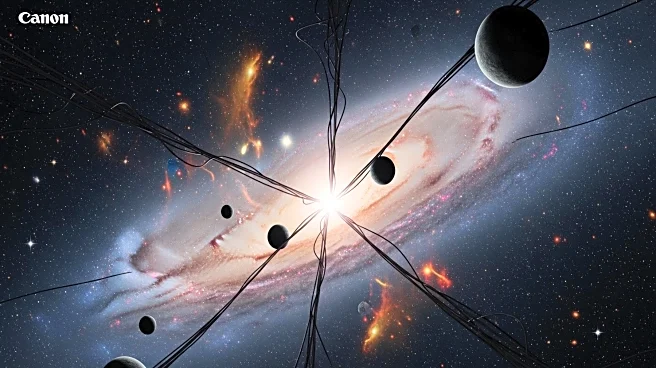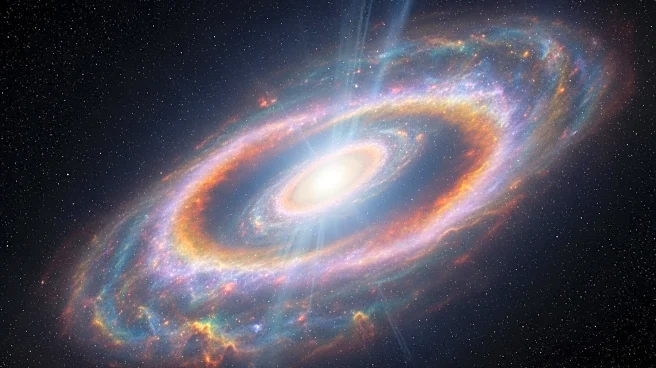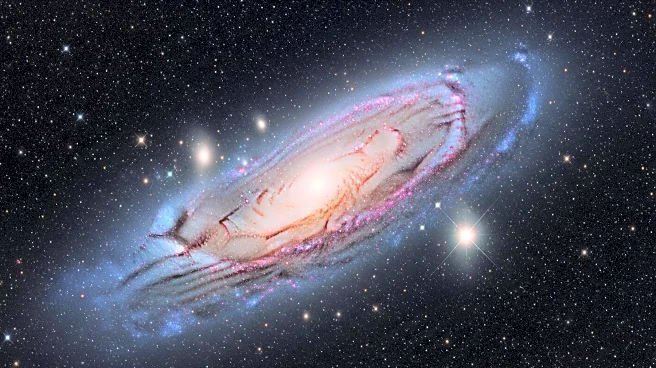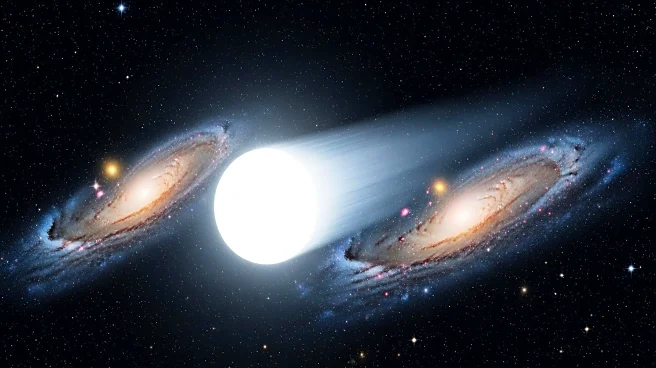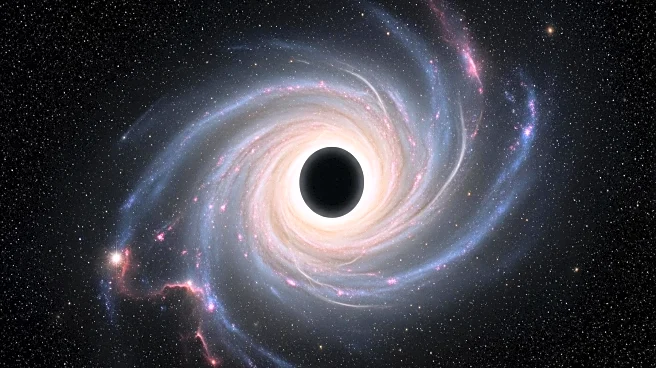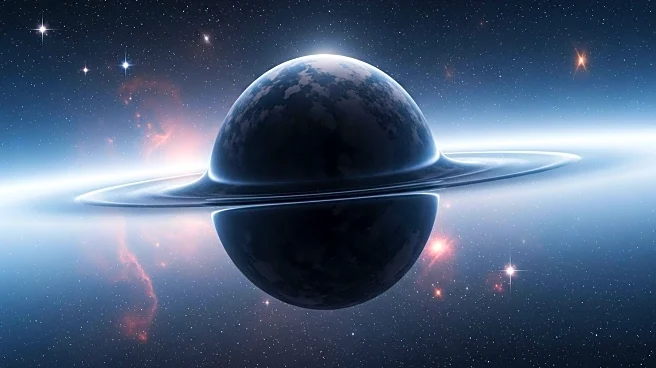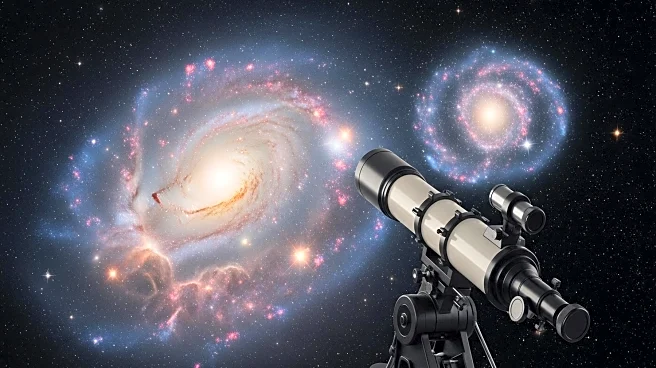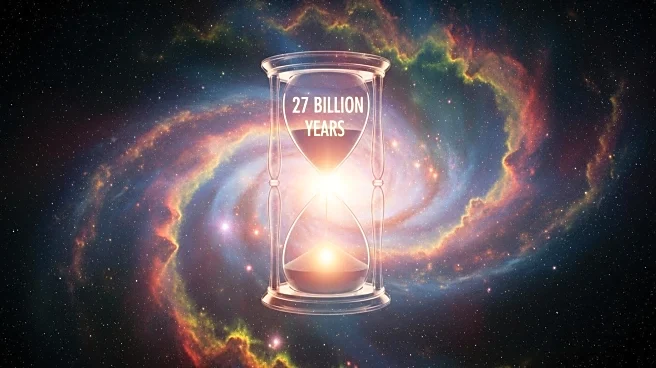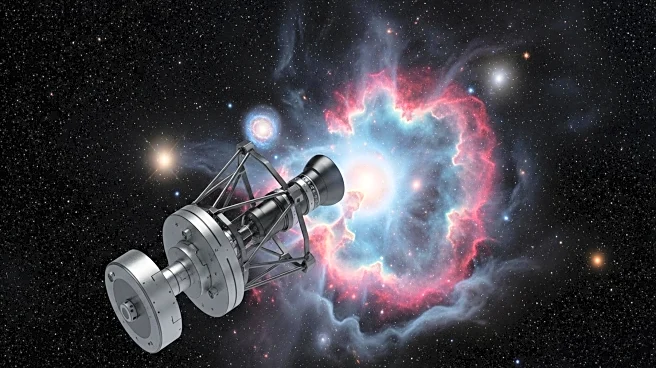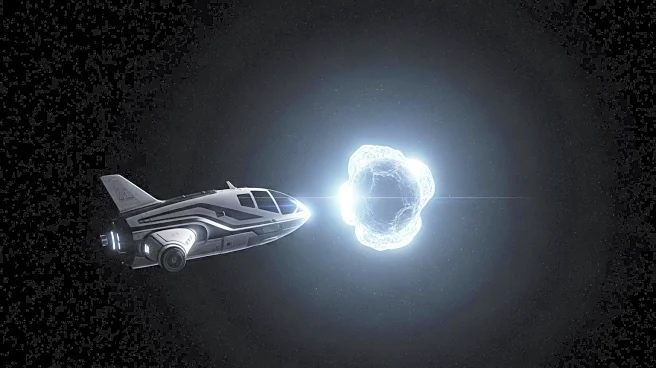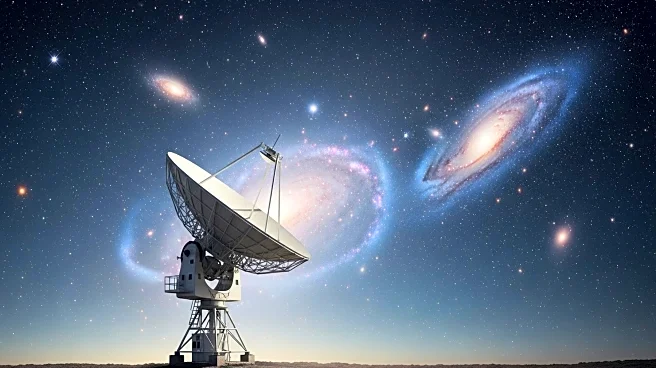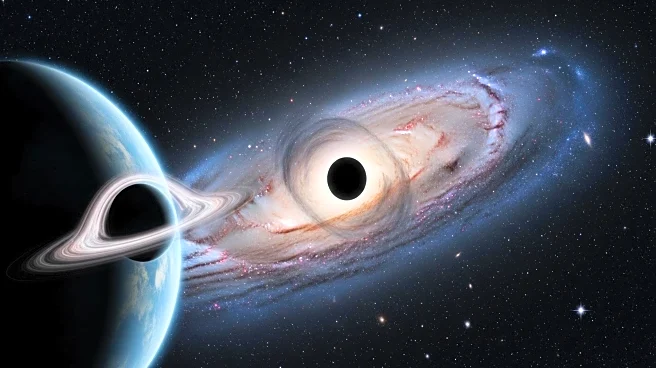What is the story about?
What's Happening?
Astrophysicists Mehrdad Phoroutan-Mehr and Tara Fetherolf from the University of California, Riverside, have proposed a model where dark matter could accumulate in the cores of giant exoplanets, potentially forming tiny black holes. This model suggests that if dark matter particles are heavy enough and do not annihilate, they could collapse under gravity, consuming the planet and transforming it into a black hole with the same mass as the original planet. The study highlights the possibility of observing multiple black holes forming within a single exoplanet's lifetime, particularly in regions rich in dark matter, such as the Milky Way's galactic center.
Why It's Important?
The study offers a novel approach to understanding dark matter, which constitutes approximately 85% of the universe's matter but remains undetectable directly. By examining exoplanets, scientists could gain insights into the behavior and characteristics of dark matter, potentially validating the existence of superheavy non-annihilating dark matter particles. This research could pave the way for new experiments and technologies aimed at detecting dark matter, thereby enhancing our understanding of the universe's fundamental components.
What's Next?
The primary challenge in confirming this model is the current lack of technology sensitive enough to detect planet-mass black holes. However, advancements in space observation technology could eventually enable astronomers to identify these black holes, providing strong evidence for the proposed dark matter model. Continued data collection and detailed examination of individual exoplanets may offer crucial insights into the nature of dark matter, potentially revolutionizing our understanding of cosmic phenomena.
Beyond the Headlines
The implications of this research extend beyond astrophysics, potentially influencing fields such as cosmology and particle physics. Understanding dark matter's role in planetary formation and transformation could lead to breakthroughs in how we perceive the universe's structure and evolution. Additionally, this research may inspire new theoretical models and experimental approaches in the quest to unravel the mysteries of dark matter.
AI Generated Content
Do you find this article useful?
